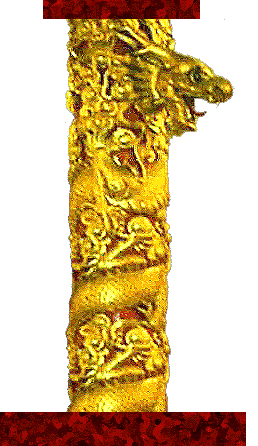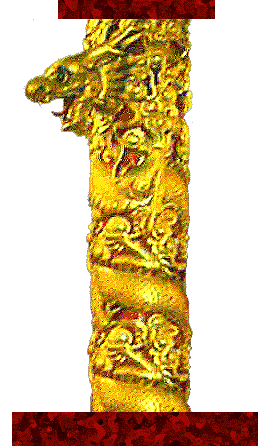| |
The sudden influx of young Hong Kong toughs disturbed traditional order. A tremendous change took place in Chinatown. Respect for elders, the Confucian principle which had maintained aging generations in positions of high authority, vanished overnight. The unquestioned management of Chinatown's affairs by Tong and Family Association leaders, and the Six Companies, came abruptly to an end.
The Tongs were the first to sense the change. As the new arrivals were brought into membership, the kids saw Tong operation at first hand. They glimpsed wide profit margins and luxurious life. Why should they work for the old-timers in exchange for pennies a day? It was true; California was indeed Gum San, Golden Mountain!
The kids decided they could handle their own deals. Extorting money from merchants, shaking down gambling houses, robbing careless winners of hundreds of dollars, demanding free meals at fine restaurants in exchange for protection--hell, it was easy pickings! And nobody would talk. The wall of silence would serve them well.
The Manion principle backfired. Chinatown had for so long policed itself in fear of the squad leader's retribution that any thought of seeking outside help had become anathema.
Besides, there were no Manions now, and the Tongs were regrouping under younger leadership, leadership that read in the Warren Court's criminal procedure decisions limitless opportunities for criminal expansion, particularly in narcotics and smuggling.
Several of the new leaders discerned a distinct advantage in the turn of events. It was traditional among the Tongs to recruit "look-see" boys from within the ranks of the membership, teen-agers who stood watch not only against the cops, who rarely showed up, but also against the competition, who often did. The competition would be getting rougher now that the law had less leeway. Tough kids were needed. A concerted effort commenced to attract the new breed of hoodlum among the F.O.B.'s and A.B.C.'s.
This led to deeper rivalries among gang youths, which spread far beyond the boundaries of Chinatown. The youngsters who lived within Chinatown were inclined to bunch together in "inside-Chinatown" gangs. These had a corner on the protection-payoff market. The look-see boys at the gambling houses gathered into other gangs to ward off interlopers.
Elder gangsters hired teen-age gunmen--the Wah Ching Gang, the Hop Sing Boys and others--to reinforce their demands for collections of as much as a thousand dollars a week from individual merchants. The hatchet men of the 19th century were replaced by pistol packers in Levi's.
Such easy cash generally was restricted to the inside-Chinatown set. There was, however, a "New Chinatown" taking shape in the Richmond District due to the enormous influx of immigrants in the 1960's.
"The Richmond," bordered on the east by Arguello Boulevard, comprised the northwestern corner of the city, marked on the north by the Golden Gate Bridge, on the west by the Pacific Ocean and on the south by Golden Gate Park. Reclaimed from sand dunes that still existed as late as the 1930's, the Richmond already boasted a potpourri of immigrants.
Russians, Germans, Indonesians, East Indians, Lebanese, Moroccans, Arabs, Japanese, Czechs, Thais, Filipinos and numerous other ethnicities had brought with them to San Francisco colorful elements of their native cultures. The area was a showcase of orderly, middle-class neighborhoods of stucco houses painted mostly in white, or vivid pastels.
Servicing the Richmond were two major arteries, Geary Boulevard and Clement Street. These parallel thoroughfares blossomed with curio shops, grocery stores and restaurants. It became possible to buy every kind of bread from French baguettes to East Indian chapati. Passersby could breakfast on Italian biscotte dipped in caffé con latte, lunch on savory morsels of pork in Japanese katsudon, or sit down to a dinner of Dutch-Indonesian rijsttafel.
For many Chinese, the move to the Richmond meant a step up from the relative squalor in the gilded ghetto of Chinatown. Relocating in this area, which lay a mere three miles from the Chinese quarter (up and down hills which made it seem like twice the distance), had become de rigueur for those whose income increased and who had begun to master English.
However, after 1965, the new wave of immigrants found Chinatown already overcrowded and quickly sought homes in the lower-middle-class sections of the Richmond. Thus isolated from the mainstream of money being made by their peers downtown in gambling, extortion, prostitution, and dope, the Chinese boys of the Richmond formed their own "outside-Chinatown" gangs.
The soon-to-be-infamous Wah Ching were first formed as a voice for Chinese youth to raise a hue and cry against the ineffectiveness of such organizations as the Six Companies in finding jobs for boys on the streets of Chinatown. Splintering began immediately as the Hop Sing Tong hired some as look-see boys at the gambling houses and others left to form the Yao Lai. Joe Fong was among those who sought independence from the restrictions of the Wah Ching and set out to form his own group.
Bitter resentment erupted in open warfare among the proliferating number of gangs. Names like the Jasper Street Alleycats, the Bugs and the Kearny Street Group began to pop up along with the Wah Ching, the Chung Ching Yee and the Dai Ben. A Chinese youth connected with an outside-Chinatown gang, or one who refused the offer of such a connection, flirted with death if he merely went shopping with members of his family down in Chinatown.
Incidents of youth-gang warfare multiplied in frequency and seriousness. Running gun battles on the streets of Chinatown, kidnappings in broad daylight, gang invasions of nightclubs by rivals on a shooting spree--in most of the cases inflicting serious injury or death--grew to epidemic proportions.
Police authorities in San Francisco, as well as those in other heavily Asian-populated cities in America and Europe where similar occurrences were taking place, found themselves embarrassingly out of step with the brutal new realities of Chinese gangdom.
The Six Companies, removed from direct knowledge of the streets, publicly decried such activities and privately worried about the threat they represented to the stability of the Chinese community in the eyes of the world at large.
The Tongs maintained tightly sealed lips when approached. Some of them, of course, were engaged in questionable enterprises in association with the gangs and scarcely could have been expected to divulge information which might lead back to their own doors. Merchants targeted for extortion were cowed by fear of gang retribution if they talked. Families, disenchanted by seven-day work weeks in what they had dreamed was a land of ease and plenty, and disappointed by the harshness of coexistence with a white majority, remained uncommunicative or simply ignorant of the affairs of their young.
Added to the storied Chinese bent for secrecy, and the fading, but still closely knit, fabric of inward-looking Chinese society, these elements made the wall of silence impenetrable to most law enforcers. There were random convictions, but the wall stood firmly.
Then, in the early hours of Sunday, the 4th of September 1977, at the height of the Labor Day weekend, a colossal jolt suddenly rocked the Great Wall of silence. San Francisco woke to the roar of Chinatown's gilt-edged economy crashing in ruins. A shudder vibrated through the city. Shock waves rippled across America, Europe and the world.
That was the night of the Golden Dragon massacre.
| |
|









